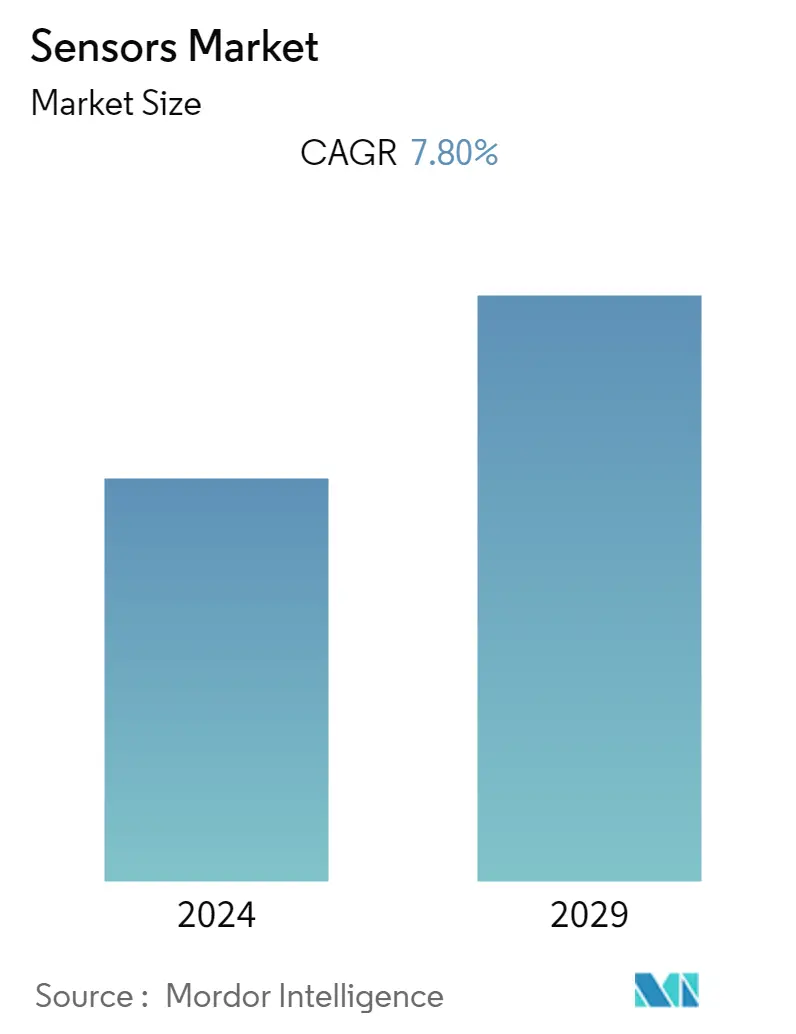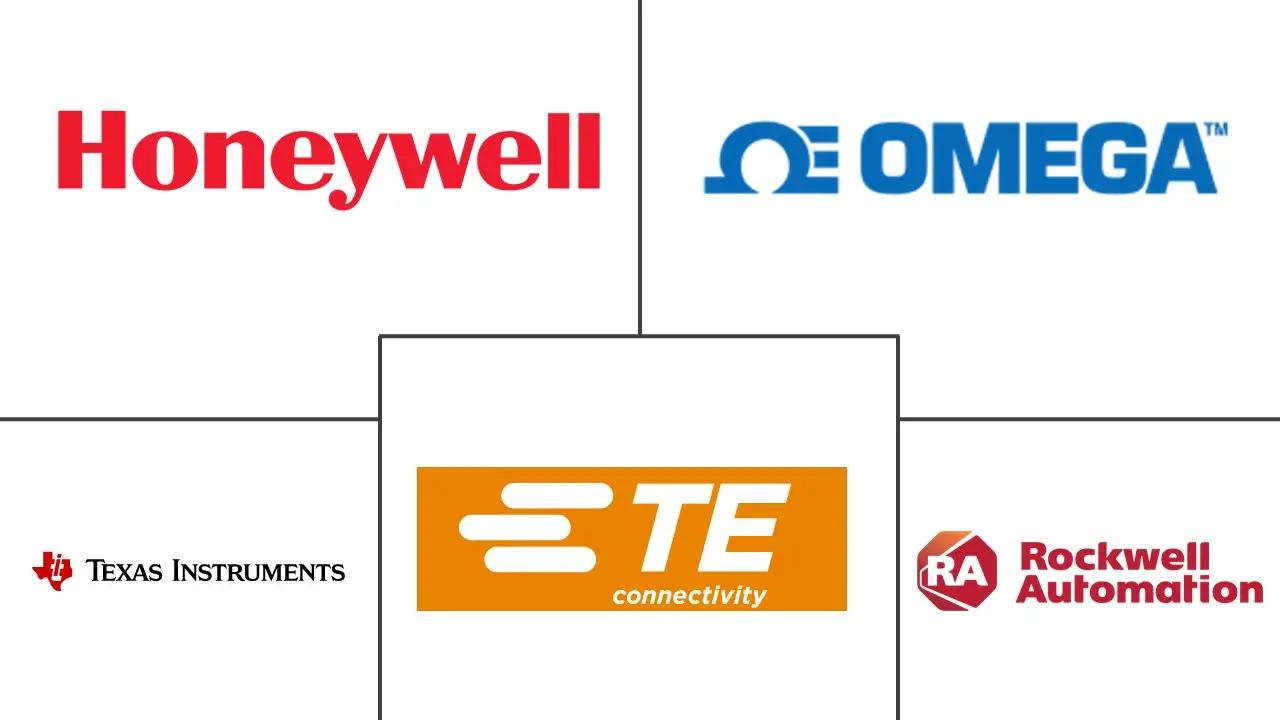Market Size of Sensors Industry

| Study Period | 2019 - 2029 |
| Base Year For Estimation | 2023 |
| CAGR | 7.80 % |
| Fastest Growing Market | Asia Pacific |
| Largest Market | North America |
| Market Concentration | Low |
Major Players
*Disclaimer: Major Players sorted in no particular order |
Need a report that reflects how COVID-19 has impacted this market and its growth?
Sensor Market Analysis
The global sensors market was valued at USD 105.89 billion in the previous year and is anticipated to reach USD 166.2 billion by the end of the forecast period, registering a CAGR of 7.8% during the forecast period. A sensor detects and responds to the inputs from the physical environment. A typical input can be pressure, heat, light, motion, and moisture, among many others. The output is a signal that is transformed into a human-readable display at the sensor's location or is electronically transmitted over a network for reading or further processing. The rising sensor compatibility with the Internet of Things (IoT) platform is slowly becoming a prerequisite for enabling remote monitoring and control.
- The IoT-connected devices have unfurled enormous opportunities for sensors in numerous applications like medical, industrial, consumer electronics, automotive, etc. According to Cisco's Annual Internet Report, by the end of 2023, there will be approximately 30 billion network-connected devices and connections, up from about 18.4 billion in 2018. In 2023, IoT devices are estimated to make up 50 percent (14.7 billion) of all networked devices, up from 33 percent (6.1 billion) in 2018. Such an increase in IoT devices would drive the growth of the studied market.
- The emergence of automation would augment the demand for sensors as they play an important part in detecting, measuring, analyzing, and processing numerous transformations like alteration in length, position, exterior, height, and dislocation that occur in industrial manufacturing sites. Further, the Industry 4.0 revolution, in which machines are becoming more intuitive and intelligent, is increasing the necessity for the industrial applications of sensors. The new machines are designed to be safer, flexible, and efficient, with the ability to autonomously monitor their performance, usage, and failure. These applications, therefore, spur the demand for highly sensitive sensors.
- Also, according to the IFR forecasts, the global adoption is anticipated to increase significantly to approximately 518,000 industrial robots operational across factories all around the globe by 2024. Such a positive growth trajectory of the industrial robots market is likely to drive the demand for sensors during the same period.
- Moreover, sensors embedded with AI (artificial intelligence) have enabled them to think and interact like humans. AI allows real-time control and auto-course correction to maintain high precision, system integrity, and robustness. It facilitates machines to control any deviations proactively. AI also delivers intelligent solutions in automation systems, predictive controls, CRM systems, high-resolution imaging applications, etc.
- Several researches regarding biosensors focusing on increasing efficiency, accuracy, and tackling limitations are anticipated to spearhead the adoption of biosensors. For instance, in August 2022, new research conducted by the University of Chicago's Pritzker School of Molecular Engineering showed that a flexible, stretchable computer chip worn directly on the skin can use artificial intelligence to collect and analyze health data in real-time. The device is a neuromorphic computer chip that uses semiconductors and electrochemical transistors to collect data from biosensors in contact with the skin. Unlike other wearable products, such as smartwatches that leave a small gap between the device and the user's skin, this chip is designed to be worn directly on the skin, improving sensor accuracy and data collection.
- Although integrating sensors boosts the industrial automation level, it incurs an additional cost, limiting the use in cost-sensitive applications. Additionally, high development costs involved in the research and development activities to manufacture new products act as a critical challenge, mainly for the cash-deficient small and medium-sized sensor manufacturers.
- Also, the Russia-Ukraine war is impacting the supply chain of semiconductors and electronic components, thereby severely impacting the global sensors market. The dispute has disrupted the supply chain, causing shortages and price increases for these materials, impacting industry 4.0 manufacturers and potentially leading to higher costs for end-users. Such factors might restrain the growth of the studied market.
